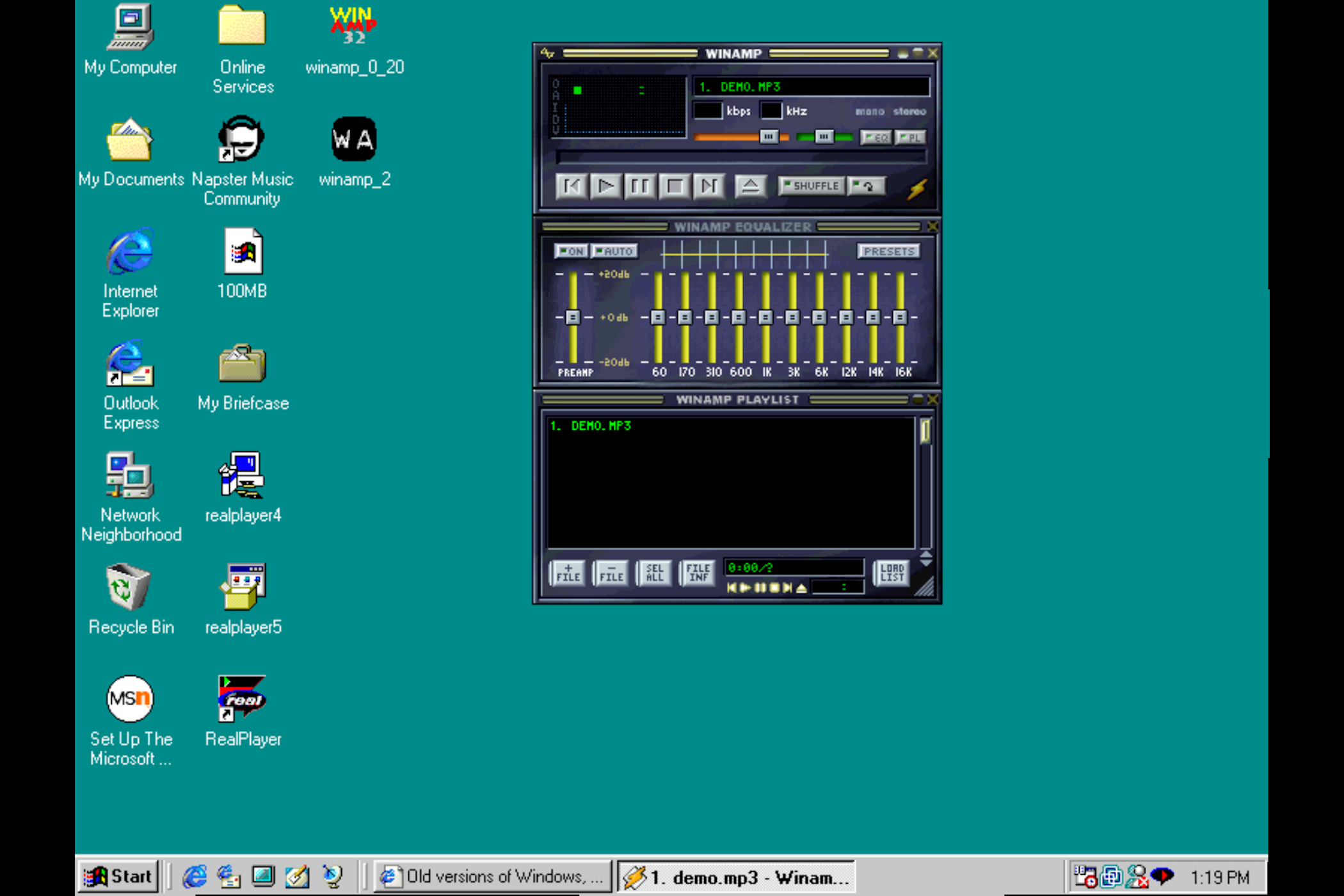After writing this, I thought I could use another flashlight, but seems that Ryobi has discontinued the P705 and seems to have replaced it with the PCL660 which has a different form factor.
- 20 Posts
- 218 Comments
- StrawberryPigtailstoNo Stupid Questions@lemmy.world•why does every single flashlight have multiple settings that you have to scroll through?10·2 days ago
- StrawberryPigtailstoNo Stupid Questions@lemmy.world•why does every single flashlight have multiple settings that you have to scroll through?30·2 days ago
I know the feeling. Most of those features are only useful in low probability events.
If you’re looking for simple flashlights, Maglight has always made decent flashlights, though I’ve been buying Ryobi flashlights for the last 15 years as they are relatively affordable and I’ve already a bunch of their 18v batteries. Not sure how weather proof they are but I’ve never had an issue with the “new” (I think it’s a 10 year old design) led flashlights.
- StrawberryPigtailstoNo Stupid Questions@lemmy.world•Do drivers in the USA have to yield to alien UFO's?30·3 days ago
In my profession (trucking) the only thing that matters is preventable/nonpreventable. Liability is something for the insurance company to worry about (mostly).
This might be an interesting topic to suggest to Mike Rafi or Legal Eagle though.
- StrawberryPigtailstoNo Stupid Questions@lemmy.world•Do drivers in the USA have to yield to alien UFO's?551·3 days ago
I know it’s a joke question but here’s a serious answer:
I would treat it same as any other aircraft landing on the roadway. Give them space to do their thing because objects of greater potential energy ALWAYS have right of way, regardless of what liability laws say. Can’t sue ‘em if you’re dead.
As for laws, a quick search didn’t find anything in Federal or Alabama law about it except that the FAA here in the US says pilots consider it only as a last resort option due to safety concerns. If figure it’s probably not a common enough occurrence for laws to be made about it. Other states or counties may have something about it though.
- StrawberryPigtailstoNo Stupid Questions@lemmy.world•What careers are relatively easy to get into with decent unions behind them?280·5 days ago
Pretty much any “trade” job will have what you’re looking for. Most have good unions.
Probably the only trade that is the exception to that would be the trucking industry. This is where I am.
Decent pay, relatively easy to enter, but it’s a lifestyle, not so much a job and the Teamsters (the main trucking union) and I very much don’t get along. That is an understatement due to community and instance guidelines. We’ve had… words.
- StrawberryPigtailstoNo Stupid Questions@lemmy.world•Why am I seeing "plan your voting day strategy" so often?20·5 days ago
Not always. I live in Alabama. Usually in and out in 20 minutes. But then I do live in a more suburban area.
- StrawberryPigtailstoNo Stupid Questions@lemmy.world•How is anime and manga more popular than comics and western cartoons?630·6 days ago
I suspect the fact that I had to think a minute before I could name a recently released western cartoon that wasn’t Disney or aimed at the under 6 crowd may have something to do with it.
Sadly Saturday Morning cartoons just aren’t a thing anymore in the US.
As for comics, when was the last time you saw a comic at a grocery store or gas station? I know Marvel still makes comics but I haven’t seen them in a store in almost 30 years.
Japan likes their anime and manga so there’s a lot of variety, but for whatever reason our corporate overlords here in America decided that we didn’t want our equivalent anymore.
- StrawberryPigtailstoNo Stupid Questions@lemmy.world•It appears that my email has gotten in the hands of some scammers with a botnet or something. What do I do?120·8 days ago
Spam email has always been a problem, and there is really no way to find out how they got your email address and no way to prevent it either. Email lists are bought, sold and traded all the time.
What I do is keep the email client Thunderbird running on my desktop. It has a really good smart spam filter that learns from the email you receive and what you mark as spam/not spam. With IMAP, even your mobile devices benefit from the filtering.
Every few days I’ll check the junk folder and mark “not spam” anything that it incorrectly flagged as spam and go through my inbox and mark spam on anything it missed. I think it miss-flags maybe 3 or 4 emails per week right now. Doesn’t happen often.
- StrawberryPigtailstoNo Stupid Questions@lemmy.world•Simple way to get emails for new Lemmy or Mastodon posts?10·13 days ago
Email notifications can be setup, but the option needs to be enabled by the instance administrator. Failing that, your phone app might support push notifications.
- StrawberryPigtailstoAsklemmy@lemmy.ml•People often point to the terrible things in the world as evidence we're living in "the worst timeline". What examples are there of things that suggest our timeline is actually better than it seems?30·16 days ago
US centric, violent crime is down. Not the lowest it’s been currently, but better than it was when I was growing up.
https://www.statista.com/statistics/191129/reported-violent-crime-in-the-us-since-1990/
- StrawberryPigtailstoNews@lemmy.world•Glock pistols popular among US criminals because they're easily modified, report says.20·17 days ago
It’s a thing, and has been since the late 90’s (I think). Reliability is the main issue. The first one I had heard of had mechanical reliability problems If I remember correctly.
Haven’t looked at Biofires products lately, but they weren’t really weatherproof last I heard and weren’t recommended for duty use as a result. And then there is the eye watering sticker price. A Taurus PT92 is less than half the price of the Biofire, and has a track record for good reliability.
I seem to remember a state, New Jersey, I think, had a law on the books saying that if multiple manufacturers came out with biometricly locked firearms that biometric locks would then become mandatory. As for if that would help things, probably not.
- StrawberryPigtailstoLinux@lemmy.ml•Help me decide if I can switch to Linux, I have some questions30·17 days ago
Last time I tried (several years ago, pre-Proton) iTunes would run fine under Wine but couldn’t see a connected iPhone.
- StrawberryPigtailstoLinux@lemmy.ml•Help me decide if I can switch to Linux, I have some questions71·17 days ago
I agree with @qocu@hexbear.net . It sounds like you are trying to replicate your workflow. Windows and Linux come from different mentalities. There won’t always be a drop in replacement.
I’m short on time but perhaps I can help with your point 9 though.
Each distro’s repos are built by the people that use that particular distro. Somebody needed a particular piece of software, found it wasn’t in the repository and decided to package it and perhaps maintain it for the repo. Sometimes this is the original developer, sometimes not.
All software is built from source code. If the source code is available for Linux, you can compile it yourself. Instructions for how to do so are usually provided by the developer along with the source code, nowadays usually found at their git repository.
Of course, you don’t have to compile all your own software (it can be a headache, which is why someone came up with precompiled packages), but it is an option if the software in question is not available in your distribution’s repo.
Your number 1 point: I like Kate, vscode and micro as text editors. They are fairly simple.
- StrawberryPigtailstoTechnology@lemmy.world•World now has five times more photovoltaics than nuclear powerEnglish51·26 days ago
Thank you. I was trying to figure this out as well.
- StrawberryPigtailstoSelfhosted@lemmy.world•What's the easiest way to host a music colletion (FLAC)?English40·1 month ago
Currently I use Jellyfin and found it simple enough to setup. My personal setup is https on the public internet using Caddy as a reverse proxy to handle the https part, but you can set it up for local network access only using http.
Jellyfin itself is not the greatest music player ever, (UI is more setup for movies and tv) but there are music-centric apps that use it as a backend that are really good, for most platforms. On my phone and tablet, I really like Finamp, and on the desktop I use Sonixd.
I’m also considering just getting a portable, 128GB FLAC player with a minijack connection and moving on with my life without getting involved in networking at all.
I used this setup for the better part of 20 years. Nothing wrong with it, my music collection simply expanded to the point where it simply wasn’t feasible to store all of it on my iPod anymore and from day to day I never really know what I’m going to be in the mood to listen to. Setting up a streaming service made more sense for me.
It sounds like a decent way to fund a server. It’s not something I’m interested in, but you might get some takers.
- StrawberryPigtailstoSelfhosted@lemmy.world•How can I keep my forwarded port secure?English65·1 month ago
The simplest way to do this, is to put the server on a private vpn (I use Tailscale, there are others) and expose ports only to the vpn. Then you share access to the vpn with your friends.
With Tailscale, this is as simple as sending them a share link for the host. They will need to have an account at Tailscale, and have the client running, but they will then be able to access the host with a static ip address.
As a general rule of thumb, nothing should be exposed to the public internet unless you want that service to be public access and then you need to keep it up to date. If a vulnerability doesn’t currently exist for the service, one will sooner rather than later. SSH, especially password only ssh, can be broken into fairly easily. If you must expose ssh to the public internet for whatever reason, you need to be using IP white lists, password protected keys, change the default port, and turn off service advertisements and ping responses. I’m probably missing something. When someone scans your server randomly, they should see nothing. And if they fail login they should be ip blocked.
- StrawberryPigtailstoSelfhosted@lemmy.world•What OS is best for a beginner to degoogle?English70·1 month ago
- Host family media through Jellyfin, etc. This would include tv, music, and possibly books as well. Many of these will be managed through the Arr apps.
- Degoogle my phone - I’m beginning by replacing Photos with Immich, but hope to also use Home Assistant, backup other phone data such as messages media, shopping lists, etc. I hope to replace Google storage/backup with Proton Drive.
Seems like a solid plan. I used Nextcloud as a Google Drive/Photos/Calander/Lists replacement, but depending on what you are running as your server it may be a bit too heavy.
I’ve heard that once you get into it, Linux distros like Ubuntu are not very user friendly for self-hosting as a beginner.
Not sure who is saying this. Granted, if your not used to *nix, our ways of doing things can be a bit obtuse from time to time but the Ubuntu based distros are some of the most heavily documented distros available with only Arch being better documented (Don’t use Arch unless you’ve got stock in Bayer. /joking, kinda).
Your current OS choice is maybe not what I would choose, but it is fine. Xubuntu just Ubuntu Server with the XFCE desktop installed. A bit heavy for a server install as a result. One thing I will say is that most server software is setup via the command line and setup via configuration files (These are just regular text files readable by any text editor. I like micro, but anything will work). The desktop environment is just extra weight you don’t really need in this application. Doesn’t hurt anything, just heavy and not really needed.
So is it better on the whole for a beginner to have a popular distro with lots if documentation and step by step guides, or to have a purpose-built OS like TrueNAS that might be more straightforward, but with less support?
Stick with what you have. Ubuntu is a very well supported server distro, and the XFCE desktop doesn’t change that. Things like TrueNAS, UnRAID, and whatever is the flavor of the week tend to cover things up to simplify things. This is fine when they work correctly, the problem comes when things inevitably break. You won’t know where to go looking to fix things. Also TrueNAS is a network storage OS, not really suited for what you are trying to do currently, which seems to be hosting services.
It seems to be working well, but I’ve had a few hiccups trying to update it,
What hiccups were you running into? And were you using the GUI tool or apt on the command line?














Might have been a temporary issue. It’s working for me.